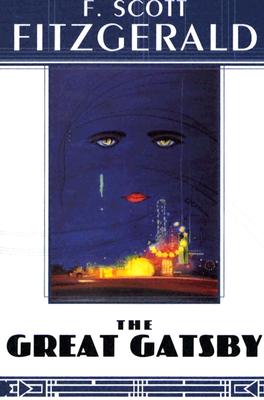One of the most common desires I hear from readers is “I wish I read more of the classics in school.” Possibly due to not paying attention in English classes, inadequate teachers, or an emphasis on non-literature subjects, many adults feel that they’ve missed out by not reading the stars of western literature. Yet, sitting down with War and Peace or Madam Bovary can feel intimidating. Not everyone has the option of a book club or a literature class. One answer–pair classics with modern literature and create a literary dialogue between the two books.
 Continuing with the discussion in an earlier post concerning creating eye catching display tables, pairing modern books with classics casts a new light on both works. My favorite recommendation is to read The Great Gatsby, then The Double Bind by Chris Bohjolian and/or Netherland by Joseph O’Neill. The Double Bind plays with the plot of The Great Gatsby; the main character in Bohjolian’s book meets the Gatsby characters and discusses their post-novel life. Then, the book ends with a blindsiding kicker. Netherland is often referred to as the “new” Gatsby because it deals with a similar underlying theme of achieving the American dream, whether it is possible and at what cost.
Continuing with the discussion in an earlier post concerning creating eye catching display tables, pairing modern books with classics casts a new light on both works. My favorite recommendation is to read The Great Gatsby, then The Double Bind by Chris Bohjolian and/or Netherland by Joseph O’Neill. The Double Bind plays with the plot of The Great Gatsby; the main character in Bohjolian’s book meets the Gatsby characters and discusses their post-novel life. Then, the book ends with a blindsiding kicker. Netherland is often referred to as the “new” Gatsby because it deals with a similar underlying theme of achieving the American dream, whether it is possible and at what cost.
Reading a book that updates a classic for a current audience adds meaning to both works and is great for a bookstore discussion event. Philip Roth’s Everyman is a modern re-telling of The Death of Ivan Ilyich by Leo Tolstoy. Both books reflect their authors; the scene with the main character flirting with the woman runner on the beach is pure Roth. Lovers of Tolstoy would pick up on his style within the first few paragraphs of Ivan Ilyich. The similarities in the views of two aging writers who are, shall we say, extremely self-confident are thought and discussion provoking. These books can be read in any order, but I found I understood Tolstoy’s book better having read Roth’s first.

Switching to the other end of the age spectrum, Prep by Curtis Sittenfeld gives a 21st century female take on The Catcher in the Rye by J.D. Salinger. Many readers are familiar with Salinger’s classic since it is on most middle school reading lists, but it felt different reading it as an adult after Prep. As with many pairings, one of the takeaways is ‘nothing is new under the sun,’ the facts and circumstances change but the themes resonant over the decades.
For the truly ambitious, War and Peace inspired portions of The Emperor’s Children by Claire Messud. The opening scene in both books is a snapshot of high society. As a modern novel, Messud doesn’t try to give every perspective of a period in time as Tolstoy attempts, but she still provides a sweeping panorama of New York literary life. I liked Messud’s book much better after reading War and Peace, I recommend tackling Tolstoy before Messud.
Finally, a current favorite, The House on Fortune Street by Margot Livesey, boldly declares a literary godparent for each of the four main characters. As Keats was an observer of life, so Sean watches and reacts to circumstances. Admiration for Lewis Carroll and Alice in Wonderland helps the reader sympathize with Cameron. The plot of Jane Eyre is directly quoted in Dara’s life. Abigail is Estella from Great Expectations. Reading each of these source books adds tremendous depth to the meaning and style of Fortune Street. I read Great Expectations right before Fortune Street, remembered Alice as I read it, and went back to Keats poetry after finishing the book. As for Jane Eyre, I’ll re-read it again to better empathize with Dara’s decisions.
Pairing classics with modern literature highlights back-list books and encourages customers to try the classics they wish they had read in school.
